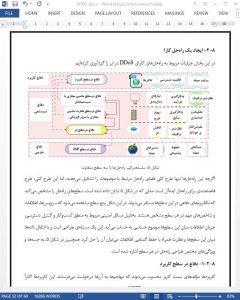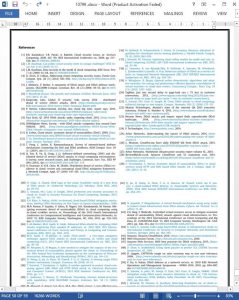Abstract
Security issues related to the cloud computing are relevant to various stakeholders for an informed cloud adoption decision. Apart from data breaches, the cyber security research community is revisiting the attack space for cloud-specific solutions as these issues affect budget, resource management, and service quality. Distributed Denial of Service (DDoS) attack is one such serious attack in the cloud space. In this paper, we present developments related to DDoS attack mitigation solutions in the cloud. In particular, we present a comprehensive survey with a detailed insight into the characterization, prevention, detection, and mitigation mechanisms of these attacks. Additionally, we present a comprehensive solution taxonomy to classify DDoS attack solutions. We also provide a comprehensive discussion on important metrics to evaluate various solutions. This survey concludes that there is a strong requirement of solutions, which are designed keeping utility computing models in mind. Accurate auto-scaling decisions, multi-layer mitigation, and defense using profound resources in the cloud, are some of the key requirements of the desired solutions. In the end, we provide a definite guideline on effective solution building and detailed solution requirements to help the cyber security research community in designing defense mechanisms. To the best of our knowledge, this work is a novel attempt to identify the need of DDoS mitigation solutions involving multi-level information flow and effective resource management during the attack.
1. Introduction
Cloud computing is a strong contender to traditional IT implementations as it offers low-cost and “pay-as-you-go” based access to computing capabilities and services on demand. Governments, as well as industries, migrated their whole or most of the IT infrastructure into the cloud. Infrastructure clouds promise a large number of advantages as compared to on-premise fixed infrastructure. These advantages include on-demand resource availability, pay as you go billing, better hardware utilization, no in-house depreciation losses, and, no maintenance overhead. On the other hand, there is a large number of questions in cloud adopters mind which is discussed in literature [1,2]. Most of these questions are specifically related to data and business logic security [3]. There are many security related attacks, that are well-addressed for the traditional non-cloud IT infrastructures. Their solutions are now being applied to cloud targeted attacks. As data and business logic is located on a remote cloud server with no transparent control, most security concerns are not similar to their earlier equivalents in non-cloud infrastructures.
9. Summary and conclusions
This work provides a comprehensive and detailed survey about the DDoS attacks and defense mechanisms eventually available in the cloud computing environment. We have shown through the discussion that EDoS attack is a primary form of DDoS attack in the cloud. DDoS attacks have important characteristics which play an important role while considering utility computing models. This paper introduces the cloud computing features which are critical in order to understand the DDoS attack and its impact.
We have also presented attack statistics, its impact, and characterization by various contributors. We propose a novel comprehensive taxonomy of DDoS attack defense solutions in cloud computing. We believe that this survey would help to provide a directional guidance towards requirements of DDoS defense mechanisms and a guideline towards a unified and effective solution. There are a large number of solutions which have targeted the DDoS attack from one of the three solution categories of attack prevention, detection, and mitigation. Among these solutions, there are few contributions which are targeting at cloud-specific features like resource allocation, on-demand resources, botcloud detection, and network reconfiguration using SDNs. We also provide a comprehensive list of performance metrics of these solution classes for their evaluation and comparison. We believe that this novel attempt of presenting the complete set of evaluation metrics for a variety of DDoS solutions may help in orchestrating the benchmarking of upcoming solutions.











